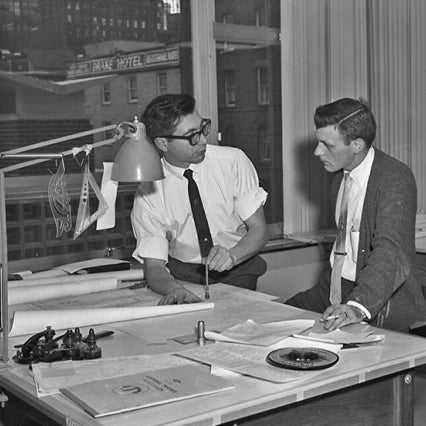Early engine design, a bathtub analogy and a tight jacket

This analogy was shared with us and we share it with you.
Early liquid-cooled engines surrounded their cylinders and heads with lots of water in large water jackets and often had no pump at all. The coolant circulated by convection e.g. hotter water expands, becomes less dense, and consequently slowly rises out of the engine through a really large hose to the radiator where it was cooled, contracting slightly and thus became more dense, falling back to the engine through a second hose at the bottom of the radiator.
This thermosiphon system worked well but as engines became more more powerful the thermosiphon’s slow circulation rate permitted the formation of steam pockets, which resulted in overheated engines.
Early engineers determined that moving the water through the engine fast enough to scour away potential steam pockets which prevented overheating and thus added water pumps. There were still problems so next they began to make the coolant passages smaller. Doing so raised the block pressure and the coolant had to move through them faster.
Why did the very slow circulation through big water jackets fail to keep up with engine power increases? The answer has to do with the difference between slow-moving and fast-moving flows. When flow moves slowly it tends to move in layers that don’t mix with well each other.
Imagine yourself soaking in a hot bathtub. As the water begins to cool we stir the water to feel the warmth again. The water has transferred heat from the water to our skin and the water against our skin has cooled and so we feel less warm. When we stir the water, we bring water from elsewhere into contact with our skin. A Jacuzzi , which circulates hot water, constantly moves the cooler layers of water next to our skin, and replacing it with hot water that has just passed over the heater.
In an engine with a large water jacket and slow-moving coolant, the layer of water next to the hot cylinder and head surfaces is quickly heated—possibly enough to boil it—but water in more distant layers remains cool.
When we stirred the bath water to bring distant hot water to make us feel warm again, we created turbulence—random swirling, mixing motion. As fluid flow accelerates, a point is reached at which movement in layers—so-called “laminar flow”—is replaced by turbulent flow. In an engine turbulent flow improves cooling by constantly bringing cooler fluid from all parts of the flow into direct contact with the hot surfaces we want to cool, the block itself.
Heat flows from a hotter object to a cooler one in direct proportion to the temperature difference between them, so turbulent flow improves cooling by constantly bringing all parts of the flow (not just a thin layer) into contact with hot surfaces. This is why making coolant passages smaller to force coolant to become more turbulent has been so successful in improving cooling. The higher the coolant flow velocity is made the more turbulent it becomes and the more heat can be exchanged.


Comments on this post (0)